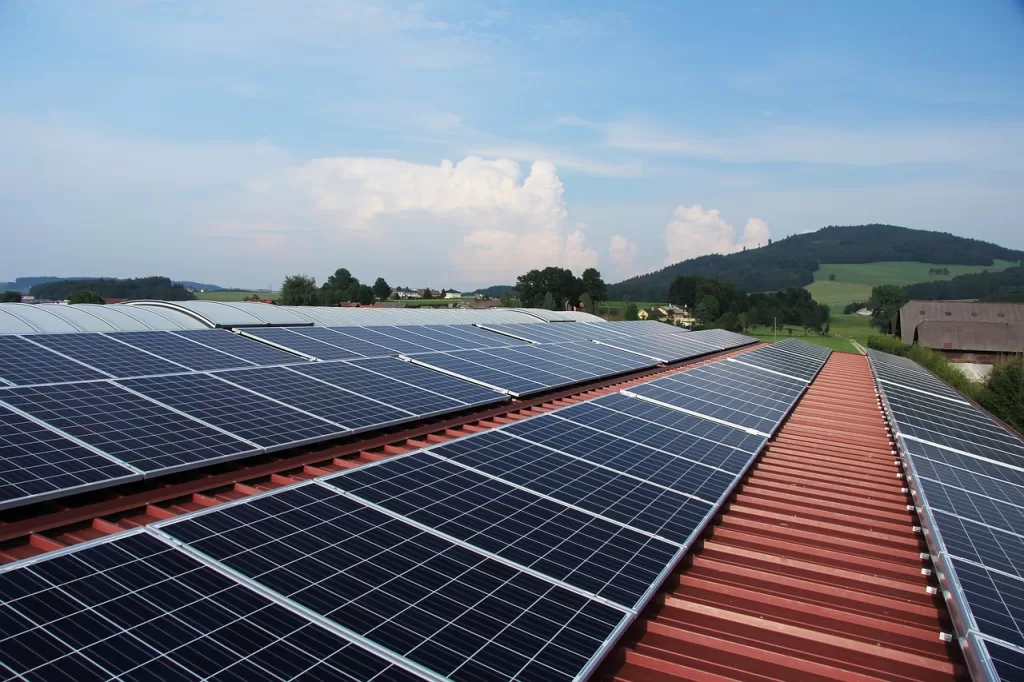With the increasing demand for reliable and sustainable energy sources, microgrids have emerged as a game-changer in the power industry. These localized energy systems transform how we generate, distribute, and consume electricity. This technology can potentially revolutionize how we consume energy, making it more efficient and cost-effective.
A microgrid is a small-scale power grid that operates independently or in conjunction with the primary power grid. It consists of localized energy sources, such as solar panels, wind turbines, or even small-scale generators, coupled with energy storage systems and advanced monitoring technologies. Microgrids can operate on-grid, connected to the main power grid, or off-grid, functioning autonomously.

Microgrids are self-sufficient, localized power systems that can operate independently or in conjunction with the main grid. The global microgrid market size was valued at USD 26.5 billion in 2021. The market is projected to grow from USD 26.5 billion in 2021 to USD 71.9 billion by 2028, exhibiting a CAGR of 18.10% during the forecast period.
North America leads the microgrid market, owing to the adoption of renewable energy sources, government initiatives, and increasing investments in microgrid projects. Europe and Asia-Pacific are also expected to witness significant growth in the microgrid market due to the increasing demand for clean energy and the need for reliable power supplies.
The microgrid market is segmented based on type, application, and geography. The off-grid microgrid segment will likely dominate the market, owing to the increasing demand for remote power supply and the need for energy independence. The commercial and industrial segment is expected to grow significantly due to the rising adoption of microgrids in data centers, hospitals, and other critical infrastructure facilities.
Microgrids offer numerous advantages over traditional centralized power systems.
1. Enhanced Reliability
One of the primary advantages of microgrids is their ability to provide a reliable power supply. By decentralizing energy generation and storage, microgrids reduce the risk of blackouts caused by failures in the main power grid. In the event of a grid outage, microgrids can disconnect and continue supplying electricity to critical facilities, such as hospitals or emergency services.
2. Increased Resilience
Microgrids improve the resilience of communities, especially in the face of natural disasters or other emergencies. They can quickly restore power to localized areas, minimizing downtime and enabling faster recovery. Additionally, they can integrate renewable energy sources, reducing dependence on fossil fuels and promoting sustainability.
3. Cost Savings
Microgrids can help reduce energy costs for communities using local energy resources. They enable electricity generation closer to the point of consumption, minimizing transmission losses and avoiding the need for expensive infrastructure upgrades. Moreover, microgrids can participate in energy trading, selling excess power back to the main grid and generating additional revenue streams.

Microgrids are empowering communities by giving them more control over their energy supply.
1. Energy Independence
Microgrids allow communities to become more self-sufficient in meeting their energy needs. By generating power locally, communities can reduce their reliance on external energy sources and mitigate the impact of rising energy costs. This energy independence fosters a sense of empowerment and resilience within the community.
2. Democratizing Energy Access
Microgrids are bridging the energy gap by providing access to electricity in remote or underserved areas. These localized grids can be deployed in regions where extending the main power grid is economically or logistically challenging. Microgrids enable communities to access clean and affordable energy, unlocking new education, healthcare, and economic development opportunities.
3. Encouraging Energy Conservation
With real-time energy monitoring and management capabilities, microgrids empower communities to optimize energy consumption. Residents and businesses can make informed decisions to reduce their energy footprint by providing visibility into energy usage patterns. This benefits the environment and contributes to cost savings for the community.
In North Carolina, the first residential microgrid development, Heron’s Nest, is already gaining popularity for these very advantages. The microgrid has a 62-kilowatt community solar system and a 255-kilowatt-hour battery unit that will provide residents with reliable backup power.
Let's look closer at the key players in the microgrid space and their offerings.
Each company offers a comprehensive microgrid solution with various components, such as energy storage, renewable energy sources, and intelligent control systems. We expect more players to enter the market and develop innovative solutions as this technology evolves.
The microgrid gives more than power to people: it offers them a sense of pride in their community. With microgrids, communities lead the way to a more sustainable future by providing energy independence, democratizing energy access, and encouraging energy conservation.